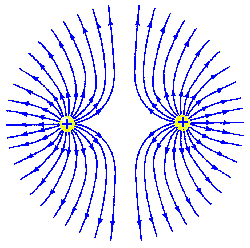Question #e8b64
1 Answer
The electric field will be zero at 8 cm from the +4Q charge.
Explanation:
The first thing you need to know is that the electric field produced by a positive charge always points away from the charge.
This is important to know because it automatically means that the point in which the net electric field is zero must be located between the two charges.

In this case, the fact that one electric field points in one direction and the other in the opposite direction means that you must subtract them to get the net electric field
The electric field at a distance
Let's assume that this point is located
So, this would get you
Rearrange this equation to get
This quadratic equation will produce two values for
So, at 4 cm from the +Q charge the net electric field is zero. The distance from the +4Q charge will thus be

